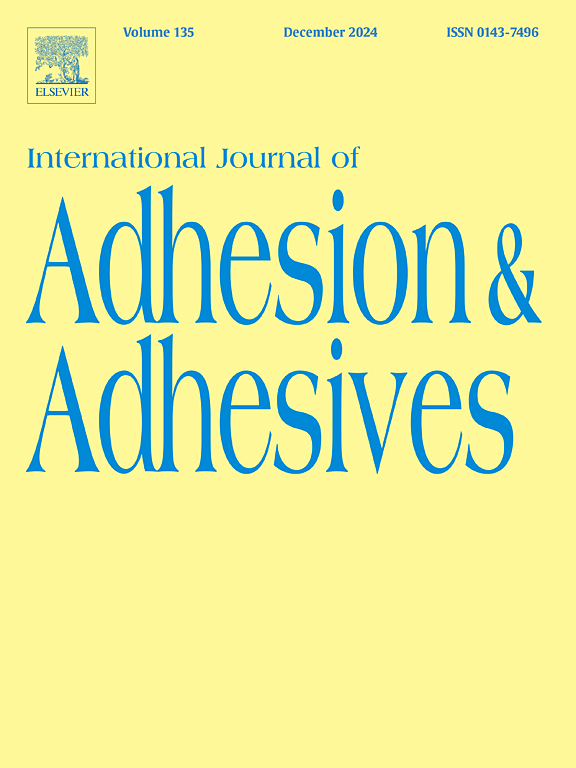高效制造多胞薄壁结构的粘接策略:轴向压缩下的冲击响应和能量吸收
IF 3.5
3区 材料科学
Q2 ENGINEERING, CHEMICAL
International Journal of Adhesion and Adhesives
Pub Date : 2025-09-25
DOI:10.1016/j.ijadhadh.2025.104166
引用次数: 0
摘要
多细胞吸能结构的设计越来越复杂,以优化设计空间利用率和承载效率。然而,通过线材放电加工或增材制造制造它们是昂贵的,并且限制了应用。本文介绍了一种将折叠金属板粘合成粘接多细胞管(AMTs)的方法。通过实验和仿真对其抗轴向冲击性能进行了评价,分析了粘接策略和关键几何参数。结果确定了最佳的胶粘剂配置。参数分析进一步表明,在一定范围内增加胶粘剂宽度和板厚可显著提高吸能性能。然而,超过这个范围的过量增加会导致性能下降和胶粘剂层失效的风险增加。值得注意的是,在所有参数变化下,amt都没有表现出全局崩溃模式或系统级粘合失效,这证实了所提出的粘合方法的可靠性和适用性。与传统的多细胞结构相比,amt的能量吸收最大提高了25%。所提出的结构在抗冲击性和制造效率之间表现出良好的协同作用,突出了其作为传统薄壁多细胞能量吸收器的可行替代品的潜力。本文章由计算机程序翻译,如有差异,请以英文原文为准。
Adhesive bonding strategy for efficient manufacturing of multicellular thin-walled structures: impact response and energy absorption under axial compression
Multicellular energy-absorbing structures are being designed with increasing sophistication to optimize design space utilization and load-bearing efficiency. However, their fabrication by wire electrical discharge machining or additive manufacturing is costly and limits applications. This study introduces an adhesive bonding strategy to assemble folded metal sheets into adhesive multicellular tubes (AMTs). Their axial impact resistance was evaluated through experiments and simulations, followed by analysis of bonding strategy and key geometric parameters. The results identified an optimal adhesive configuration. Parametric analysis further demonstrated that increasing the adhesive width and plate thickness within a certain range significantly improved energy absorption performance. However, excessive increases beyond this range resulted in performance degradation and a heightened risk of adhesive layer failure. Notably, under all parameter variations, the AMTs did not exhibit global collapse modes or system-level adhesive failure, confirming the reliability and applicability of the proposed bonding approach. Compared with conventional multicellular structures, the AMTs achieved a maximum improvement of 25 % in energy absorption. The proposed structure demonstrated excellent synergy between impact resistance and fabrication efficiency, highlighting its potential as a viable alternative to traditional thin-walled multicellular energy absorbers.
求助全文
通过发布文献求助,成功后即可免费获取论文全文。
去求助
来源期刊

International Journal of Adhesion and Adhesives
工程技术-材料科学:综合
CiteScore
6.90
自引率
8.80%
发文量
200
审稿时长
8.3 months
期刊介绍:
The International Journal of Adhesion and Adhesives draws together the many aspects of the science and technology of adhesive materials, from fundamental research and development work to industrial applications. Subject areas covered include: interfacial interactions, surface chemistry, methods of testing, accumulation of test data on physical and mechanical properties, environmental effects, new adhesive materials, sealants, design of bonded joints, and manufacturing technology.
 求助内容:
求助内容: 应助结果提醒方式:
应助结果提醒方式:


